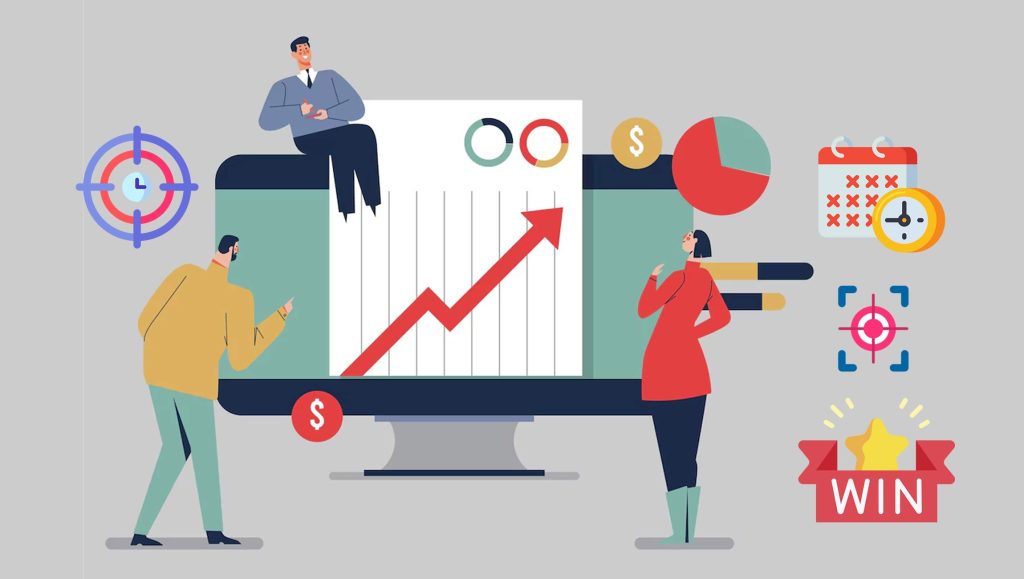B2B event planning has come a long way. In addition to measuring effectiveness based on attendance, we are also talking about event-led strategies focusing on wins.
B2B marketers have realized that traditional marketing strategies are falling short in event success, and thus, there is a need for a transformative strategy that focuses on what and how much business an event brings to the table. Let us unfold the limitations of traditional event strategies and highlight the valuable addition of event-led growth (ELG) growth strategies for turn-around B2B marketing events.
What is the problem with traditional event metrics?
The most common and flawed metrics measured are revenue in the room.’ It is nothing but the number of people attending the event. Measuring this metric and believing the results are the same as a car dealer measuring the value of the total unsold cars in his garage.
The metric gives you the number of prospective buyers who may enter your sales funnel in the future, but there is no certainty about it. This approach prioritizes getting a large number of potential customers to an event, even if they aren’t a good fit or aren’t ready to buy. This can weaken the impact of the event and make it harder to create meaningful connections with the right people.
So, what’s an effective metric, then? It is the win rate. You should ask questions like, ‘Did a potential buyer move on to the next stage of purchase after attending the event?’
When your event focuses on win rates, the entire event planning process transforms. The focus will be on a small group of interested people rather than bringing hundreds to the conference room. The number of events will increase, and it will increase the win rates for your organization.
That is the magic of event-led growth strategies.
Event-led growth (ELG)
Event-led growth is more than a tactic; it’s a holistic go-to-market strategy.
Event-led growth is an out-of-the-box solution for B2B enterprises. ELG is a data-driven powerhouse that lets you deliver immersive experiences and bring solid business results to the table.
In simple words, ELG is a blueprint to strengthen customer relationships, increase customer engagement, and boost revenues. Let’s find out the role of ELG in fostering deeper customer connections beyond focusing on mere attendance.
Benefits of Event-Led Growth
ELG harnesses the potential of events by offering a plethora of game-changing benefits that traditional tactics like PLG (product-led growth) and SLG (sales-led growth) cannot match. Here are the benefits of ELG:
- You build deeper and more meaningful connections with your audience.
- ELG amplifies the impact of your event.
- ELG boosts your lead generation.
- It works well for market research.
- Improves the first experience of users with your products.
- It helps you build a stronger social community.
Read More: SalesTechStar Interview with Clay Sharman, Founder and CEO of Krateo AI
Mastering the ELG Strategy
Mastering an event-led growth strategy requires a well-thought-out and well-crafted plan. Not only should your event planning be interesting and engaging, but it should also align with your business objectives. Here is a step-by-step process you can follow:
Step 1:
Start by defining your goals and objectives for planning an event. Find out the why behind the strategy:
Do you want to launch a new product? Or
Do you want to increase your customer retention? Or
Are you looking at simply boosting your sales?
Answer these questions, clearly define the goals, and stay focused through the planning and execution process.
Step 2:
As you have defined your objectives for ELG, the next step would be to craft engaging event concepts. But before that, you should know your audience. A thorough market research based on demographics, pain points, and preferences will provide insights into your end consumer behaviour.
Once you have a buyer persona defined in detail, you can brainstorm event concepts catering to their specific needs and interests.
Step 3:
At this step, you should think of engaging event platforms based on ease of use, accessibility, and features. While deciding upon the event platform, you should consider the benefits of virtual, physical, and hybrid platforms that align with your marketing strategy.
Step 4:
In this step, you must develop a comprehensive timeline, including all the stages of event planning. Assign deadlines to each task and track progress.
Assemble a skilled team with expertise in event planning and encourage them to have open communication to plan and promote the event further.
Remember to craft events that add value to your audience. Time is the most expensive thing today, and your attendees must feel they have invested their time in attending your event. Conclude your event with proper follow-up and lead nurturing.
Wrapping Up
Event-led growth will boost the performance of your business in the B2B landscape. The tactic is driving remarkable business growth and lasting connections for your audience. As stated, ELG amplifies the impact of your events by increasing their reach and influence above and beyond the event venue.
Your attendees love attending the event, and they take a piece of it with them. It is time to embrace and harness the power of ELG, nurture connections, and propel the success of your business.
Read More: Agile Supply Chain Management Practices: Embracing Emerging Technologies





















